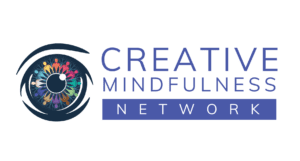I grew up tortured by the tenets of fundamentalist Evangelical Christianity, and in my young adulthood, navigated to conservative communities within Catholicism. While some use my background against me, saying that I’m unnecessarily guarded, I believe that proactively healing from the wounds of spiritual abuse these last two decades gives me an uncanny ability to call out rigidity when I see it. Even as a kid being volleyed back and forth between two devout parents in their own right (one Evangelical, one Catholic), I learned to see the merits of both. AND I couldn’t understand why we all seemed to resist seeing the common ground. That included Jews, and Muslims, and Hindus, and Jains, and Buddhists, and all the great wisdom traditions of the planet! To me, our beliefs have a common thread, yet I grew up in contexts where I was told differently. The first time I ever saw the now legendary CoExist symbol was on a billboard when I first visited Sarajevo in 2000. I turned 21 that summer and Bosnia-Hercegovnia, where I would remain to live and teach for the next three years, was still in the throes of recovering from a brutal civil war. Personally, I was struggling to identify my own spiritual path as I sought recovery from addiction. When I saw that billboard, I knew with every fiber in my being that the CoExist symbol was my path. I came to learn it had a name–sanatan dharma—the threads that unite us are the essence of truth and worthy of embracing. The rest is just details.
Resting into this spiritual path serves me well in my personal life, and it’s largely shaped my professional outlook. Which brings this all to eye movement desensitization and reprocessing (EMDR) therapy… An experience with a phenomenally integrative EMDR therapist in 2004 saved my emotional life (when I was two years sober and still struggling with maladaptive dissociation). I received my training in 2005-2006, and jumped in with both feet, regularly offering the therapy to my clients. While working on my doctoral studies, I first attended the EMDR International Association (EMDRIA) annual meeting in 2007. Brazenly, I introduced myself to EMDR founder Dr. Francine Shapiro to thank her for what she created, yet it was at the conference where I would also meet other wonderful people in the EMDR community who would made even more of a difference for me. One of those people was Dr. Sara Gilman from Encinitas, CA, who became my primary consultant throughout the certification process. She also helped me wade through my frustrations around the politics and personalities in the EMDR community that bothered me immensely. Sara was (and still is) a radiant, real human being who truly understood how my mind worked, and she never once tried to change it. She worked with it and helped me fall in love with EMDR even more! A line that she consistently used in our work together, when I struggled with some of the rigidity in the protocols was, “Jamie, this is what the textbook tells you to do. This is what I actually do.”
That guidance from Sara represents a balance that I hope I have also been able to impart as an EMDR clinician, consultant, educator, and training provider. This guidance was the inspiration for my first book that Premiere Education and Media published in 2011, EMDR Made Simple: 4 Approaches to Using EMDR with Every Client. I knew that the book would likely make me a pariah in the EMDR establishment, and at that time I didn’t care. I believe I had something useful to say from my lived experience about how fundamentalism and rigidity benefits no one, especially people like me with complex trauma and dissociation. Even at that point, I would sit in conference presentations and feel like the powers that be who got the microphone on these topics were talking in such intellectual terms about people who need to be treated in a very human way—the way that Sara treated me. As I learned that EMDR therapy can play well with other therapies and approaches in a spirit of integration and modification, I started bristling when people said things like, “Well, that’s not really EMDR,” generally in putting down a savvy modification or adaptation. It reminded me of hearing people at church say things like, “Well, then you’re not really a Christian if you believe, say, or do that (insert any violation of the “rules” here).”
Ouch—why were people connected to a therapeutic modality that I loved, a therapy that helped me to heal from much of that trauma, spouting the same kind of aggression?
I dug in to investigate my reactions that were being elicited, and in 2010 I ended up writing an explanatory model that would become the basis for EMDR Made Simple—something I dubbed “the Four Faces of EMDR.” The idea is based on a teaching of St. Augustine called The Four Voices of God, presented for a modern audience by Fr. Benedict Groschel in the book Spiritual Passages: The Psychology of Spiritual Development. We studied this Augustine teaching in my Catholic graduate program and it was honestly the most important take away for me. People relate to God in one of four primary ways—as truth, as fire/oneness, as beauty, and a goodness. Of course we can have secondary paths of relating (I am fire/oneness first, and beauty second), and we tend to get along the least with the people whose style of relating to God most differs from our own (e.g., for me that’s the “truth” people… the theologians, dogmatic types, and to offer a clinical parallel, the strictly quantitative researchers). Augustine taught that all are different, and all have their place, for God shows up in a variety of ways and forms.
Call me crazy (I truly don’t care, it’s a compliment these days), this idea seemed to fit as it relates to all psychotherapies and the controversies that ensue about model fidelity versus tendencies to innovate and to modify. And from there I proposed “the Four Faces of EMDR:”
- Face 1: Strict adherence to the 8-phase EMDR protocol, specifically the 11-step targeting sequence within it, and the exact teachings of Dr. Shapiro. At the time I wrote it up as adherence to the EMDRIA definition of EMDR therapy, although even that definition and its allowances for modifications can be embraced by Face 2 people. Since the original publication of the book, the term EMDR therapy is in wider use, recognizing the larger shift towards EMDR being conceptualized as a complete psychotherapy. In 2014, Dr. Shapiro officially requested that we start referring to EMDR as EMDR therapy. Face 1 practitioners clearly view EMDR therapy in this manner.
- Face 2: Adherence to the 8-phase EMDR protocol is generally followed, although there is a much greater willingness to adapt, modify, and bring in other approaches (especially in Phases 1-2, Phases 7-8, and in working with abreaction and dissociation in Phases 3-6). Most Face 2 practitioners embrace the term EMDR therapy, acknowledging its complete nature as a therapeutic approach. I identified as a Face 2 EMDR therapist in 2010, and still do to this day.
- Face 3: Clinicians who see EMDR as more of an adjunctive technique or another tool in the toolbox as opposed a primary approach to psychotherapy. Such clinicians would not be likely to call themselves EMDR therapists, rather, would say they use EMDR. Most Face 1 and many Face 2 clinicians may criticize people for using EMDR in this manner. In my experience, such people constitute a large percentage of the clinician community using EMDR therapy, and their use of it can be a valuable component of their work.
- Face 4: EMDR-related interventions that originated with EMDR therapists who, through trial and error and their own experimentation, developed something new and different. At the time of writing EMDR Made Simple, I identified Alan Botkin’s Induced After Death Communication, David Grand’s Brainspotting, and Shirley Jean Schmidt’s Developmental Needs Meeting Strategy as such approaches. These approaches can be equally embraced as complements by other EMDR therapists or shunned as “not research-based” and not really EMDR. In a pure sense they may not be EMDR therapy, yet their roots in EMDR therapy can still be celebrated and knowledge from these approaches can be seen as valuable. There are many other approaches that have debuted since 2010-2011 that I consider to be EMDR-related if not full-scale EMDR therapy. Even some of the tools of EMDR therapy, such as self-tapping, can be responsibly used outside the context of EMDR if the clinician understands how they are using it and that the techniques alone do not represent full EMDR therapy. I respect when a book or approach markets itself as EMDR-based or EMDR-inspired, acknowledging that it is a modification and not EMDR in the purest sense.
I’ve long embraced that all of these faces of EMDR are valuable, and we need all of them in the clinical arena. Since I attempt to be as non-dogmatic as possible, I also agree it’s possible to identify with more than one face. For instance, although primarily Face 2, I have a great deal of Face 4 in me. I consider the Dancing Mindfulness approach to expressive arts therapy that I developed in 2012 to be an extension of my EMDR work and thus Face 4 in many ways. Additionally, a person may see themselves as somewhere between Face 1-2 or between Face 2-3. Although I am Face 2, I can pull out my “Face 1” language and savvy when I need it, especially in offering foundational (basic) trainings or in communicating my ideas to other Face 1 people.
I published this model in an attempt to promote some semblance of unity and cohesion among people who love and are intrigued by the wonders of EMDR therapy. Of course many resented me for it, and many considered me a genius for it… I’ll let you be your own judge of that. I’ve been thinking a great deal about “The Four Faces of EMDR” since the COVID-19 pandemic thrust an entire community of therapists, not just EMDR therapists, into working in telehealth…an area where so few of us are trained and where few research studies exist on best practices. As battles ensued around me over propriety and appropriateness in shifting EMDR therapy to telehealth (e.g., do you let people self-tap or not?, is it ethical to do trauma work online with people who dissociate?, is it prudent to venture into an area where there is so little research?, should we be taking advice on online therapy from people who are in different ideological camps?), the Jamie who wrote EMDR Made Simple ten years ago re-emerged.
I admit, especially since I am now an EMDRIA-approved trainer who has more Face 1 qualities than she used to, I’ve sometime wondered if EMDR Made Simple did more harm than good in helping therapists hone their EMDR craft. I am much less rebellious and a lot more party line as it relates to proper EMDR technique than I was back then. I’ve learned that the technique isn’t the enemy; it’s the attitude and approach that people take to the technique that causes problems. You can use it rigidly, or you can use it artfully. I even wrote two pieces lauding proper technique and explaining how I reconciled with the standard protocol here on this blog. I’ve come to appreciate that much of what I initially interpreted as rigidity in Dr. Shapiro was truly her push to get EMDR therapy validated as evidence-based by the metrics of empirical research. Even though thinking in those terms does not serve me either personally or clinically, I see how it serves our larger community. And in 2018, Springer Publishing—one of the largest publishers of mainstream EMDR material and the publisher of The Journal of EMDR Practice and Research—put out my second EMDR book (EMDR Therapy and Mindfulness for Trauma Focused Care, co-authored with Dr. Stephen Dansiger). Rebel Jamie from 2010-2011 was a bit shocked by that one!
Yet in the week when we switched over to telehealth and I struggled to find resources for my trainees and community—I listened to the different voices and the old Jamie who wrote EMDR Made Simple paid me a visit. I realized that rebel Jamie is who I need to be for myself right now, and how I need to show up for my students and my community. As I declared on a public webinar I did with my friend Mark Brayne on March 22, however you do EMDR in your office and in whatever face you work—transfer that to telehealth. Your confidence in your approach will inevitably translate and we can continue to ease or even end some suffering during this difficult time. There’s plenty of time to debate and even to research when all of this is over. For now, show up for your clients with whatever EMDR face you wear and do your best to honor other EMDR and EMDR-related clinicians who are doing the same.















One Response
Im looking for the article on sticking to the basic protocol
I saw it somewhere but cant find it now….